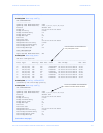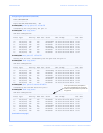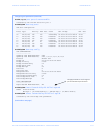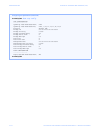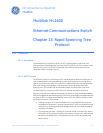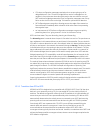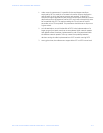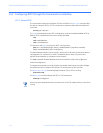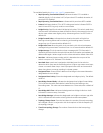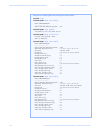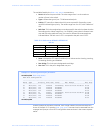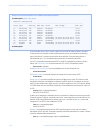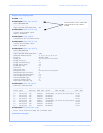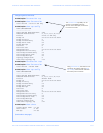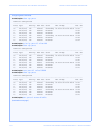CHAPTER 13: RAPID SPANNING TREE PROTOCOL CONFIGURING RSTP THROUGH THE COMMAND LINE INTERFACE
MULTILINK ML1600 ETHERNET COMMUNICATIONS SWITCH – INSTRUCTION MANUAL 13–5
The variables listed by the show stp config command are:
• Rapid Spanning Tree Enabled (Global): Indicates whether STP is enabled or
disabled globally i.e. if the values is YES, all ports have STP enabled, otherwise, all
ports have STP disabled.
• Rapid Spanning Tree Enabled Ports: Indicates which ports have RSTP enabled.
• Protocol: Indicates whether STP or RSTP is being used. It also indicates if RSTP is
used in Smart RSTP (ring-only mode) or normal mode.
• Bridge Priority: Specifies the switch (bridge) priority value. This value is used along
with the switch MAC address to determine which switch in the network is the root
device. Lower values mean higher priority. Values range from 0 to 65535 with a
default of 0.
• Bridge Forward Delay: Indicates the time duration the switch will wait from
listening to learning states and from learning to forwarding states. The value
ranges from 4 to 30 seconds with a default of 15.
• Bridge Hello Time: When the switch is the root device, this is the time between
messages being transmitted. The value is from 1 to 10 seconds with a default of 2.
• Bridge Max Age: This is the maximum time a message with STP information is
allowed by the switch before the switch discards the information and updates the
address table again. Values range from 6 to 40 seconds with a default value of 20.
• Root Port: Indicates the port number, which is elected as the root port of the
switch. A root port of "0" indicates STP is disabled.
• Root Path Cost: A path cost is assigned to individual ports for the switch to
determine which ports are the forwarding points. A higher cost means more loops;
a lower cost means fewer loops. More loops equal more traffic and a tree which
takes a long time to converge, resulting in a slower system.
• Designated Root: Shows the MAC address of the bridge in the network elected or
designated as the root bridge.
• Designated Root Priority: Shows the designated root bridge's priority. The default
value is 0.
• Root Bridge Forward Delay: Indicates the designated root bridge's forward delay.
This is the time the switch waits before it switches from the listening to the
forwarding state. This value can be set between 4 to 30 seconds, with a default of
15.
• Root Bridge Hello Time: Indicates the designated root bridge's hello time. Hello
information is sent out every 2 seconds.
• Root Bridge Max Age: Indicates the designated root bridge's maximum age, after
which it discards the information as being old and receives new updates.
• Topology Change Count: Since the last reboot, the number of times the topology
has changed. Use this in conjunction with "show uptime" to find the frequency of
the topology changes.
• Time Since topology Change: The number of seconds since the last topology
change.



